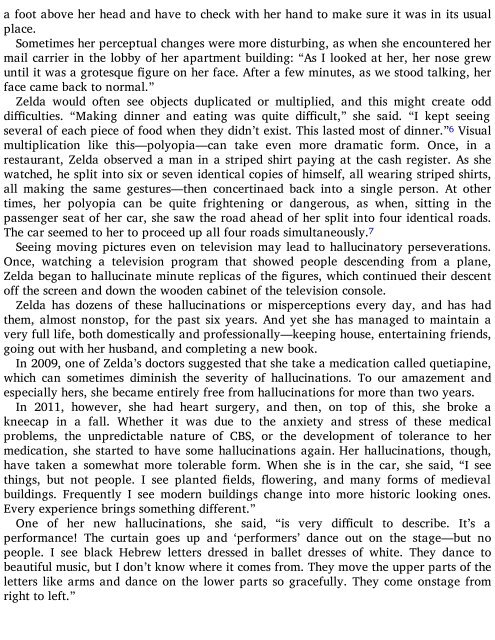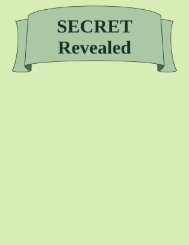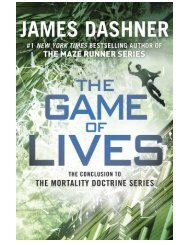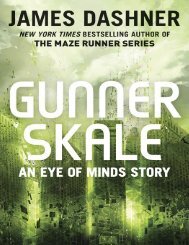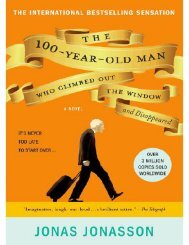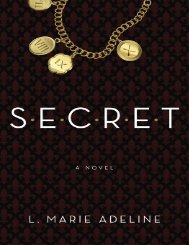32896589326509350
Create successful ePaper yourself
Turn your PDF publications into a flip-book with our unique Google optimized e-Paper software.
a foot above her head and have to check with her hand to make sure it was in its usual<br />
place.<br />
Sometimes her perceptual changes were more disturbing, as when she encountered her<br />
mail carrier in the lobby of her apartment building: “As I looked at her, her nose grew<br />
until it was a grotesque gure on her face. After a few minutes, as we stood talking, her<br />
face came back to normal.”<br />
Zelda would often see objects duplicated or multiplied, and this might create odd<br />
diculties. “Making dinner and eating was quite dicult,” she said. “I kept seeing<br />
several of each piece of food when they didn’t exist. This lasted most of dinner.” 6 Visual<br />
multiplication like this—polyopia—can take even more dramatic form. Once, in a<br />
restaurant, Zelda observed a man in a striped shirt paying at the cash register. As she<br />
watched, he split into six or seven identical copies of himself, all wearing striped shirts,<br />
all making the same gestures—then concertinaed back into a single person. At other<br />
times, her polyopia can be quite frightening or dangerous, as when, sitting in the<br />
passenger seat of her car, she saw the road ahead of her split into four identical roads.<br />
The car seemed to her to proceed up all four roads simultaneously. 7<br />
Seeing moving pictures even on television may lead to hallucinatory perseverations.<br />
Once, watching a television program that showed people descending from a plane,<br />
Zelda began to hallucinate minute replicas of the gures, which continued their descent<br />
off the screen and down the wooden cabinet of the television console.<br />
Zelda has dozens of these hallucinations or misperceptions every day, and has had<br />
them, almost nonstop, for the past six years. And yet she has managed to maintain a<br />
very full life, both domestically and professionally—keeping house, entertaining friends,<br />
going out with her husband, and completing a new book.<br />
In 2009, one of Zelda’s doctors suggested that she take a medication called quetiapine,<br />
which can sometimes diminish the severity of hallucinations. To our amazement and<br />
especially hers, she became entirely free from hallucinations for more than two years.<br />
In 2011, however, she had heart surgery, and then, on top of this, she broke a<br />
kneecap in a fall. Whether it was due to the anxiety and stress of these medical<br />
problems, the unpredictable nature of CBS, or the development of tolerance to her<br />
medication, she started to have some hallucinations again. Her hallucinations, though,<br />
have taken a somewhat more tolerable form. When she is in the car, she said, “I see<br />
things, but not people. I see planted elds, owering, and many forms of medieval<br />
buildings. Frequently I see modern buildings change into more historic looking ones.<br />
Every experience brings something different.”<br />
One of her new hallucinations, she said, “is very dicult to describe. It’s a<br />
performance! The curtain goes up and ‘performers’ dance out on the stage—but no<br />
people. I see black Hebrew letters dressed in ballet dresses of white. They dance to<br />
beautiful music, but I don’t know where it comes from. They move the upper parts of the<br />
letters like arms and dance on the lower parts so gracefully. They come onstage from<br />
right to left.”


